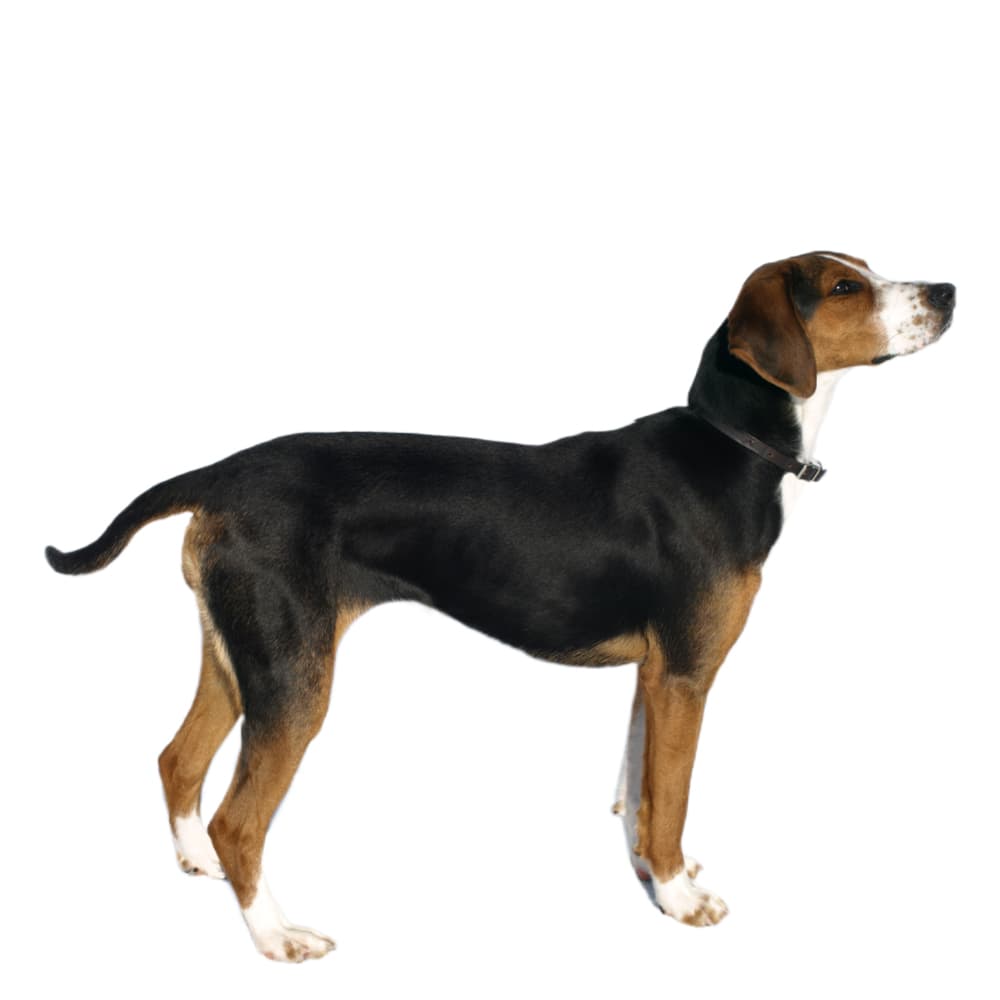Discover your dog's connection to this breed and 200+ others


Discover your dog's connection to this breed and 200+ others



The Finnish Hound was developed in Finland during the 19th century, primarily from a variety of local and imported hound breeds. Their primary purpose was to be a scenthound that could withstand the harsh Finnish winters and varied terrains, which included both flat landscapes and rugged forests. It is a scenthound breed used for hunting hares and foxes. Recognized primarily for its outstanding tracking abilities, the Finnish Hound is known for its stamina, determination, and robustness. There's no single acknowledged breed that was used to create the Finnish Hound, but it is believed to have been developed from a mix of different European hound breeds, including the German Holsteiner Hound, the Harrier, the Beagle, and other French and Swedish hound breeds.
The Finnish Hound may suffer from cerebellar ataxia (hound), demodicosis, diabetes mellitus, factor VII deficiency, and hip dysplasia. Genetic testing is recommended, including for the following additional conditions: hyperuricosoria, degenerative myelopathy, and progressive rod-cone degeneration.
Finnish Hounds are known for their energetic, friendly, and calm disposition. They have an excellent sense of smell and are known for their determination and endurance during hunts. Despite their hunting background, they are generally good with people and other dogs, making them suitable family pets for those with an active lifestyle. However, due to their hunting instincts, they may not be suitable for homes with small animals. They also need lots of exercise and mental stimulation to keep them happy and healthy.
A canine genetic lineage is a group of individuals or entire breeds that descended from common ancestors predating modern breed formation. Often these lineages are associated with a ‘type’ of dog with a unique historical working role and associated behaviors (e.g., herding, scent hunting, etc.).
The Pointer-Spaniel lineage encompasses both pointer and spaniel breeds. They were both bred for their specialized hunting abilities in Europe. Pointers locate game and freeze in a stance, called “pointing”, to indicate to their hunter that birds are close by. Spaniels were bred to find game in underbrush and retrieve it. Both pointer and spaniel breeds were bred to enhance their strong senses, trainability, and endurance as these are advantageous in a hunting partner. Spaniels and pointers are known for their strong work ethic, ability to work closely with humans and agility. These dogs’ ability to work closely with their hunters makes them an asset during a hunt because they follow direction well and know how their hunters want them to proceed.
Example breeds with ancestry from this lineage include English Cocker Spaniel, Irish Red Setter, and German Shorthaired Pointer.
Finnish Hounds are the national dog breed of Finland, and they are more popular within the country than outside of it.
They have a distinct baying bark that can be heard over long distances, a characteristic that was vital for their hunting role.
Despite their medium size, they are known for their impressive stamina and can work in various weather conditions, reflecting their history in the Finnish wilderness.
They have a unique tricolor coat, which is short, dense, and straight, providing them with protection against harsh weather.
DOI: 10.1371/journal.pgen.1002759
https://www.ukcdogs.com/finnish-hound https://www.fci.be/Nomenclature/Standards/051g06-en.pdf
Recommended by top vets with decades of experience
21 breeds
64 genetic health markers
50 genetic trait markers
